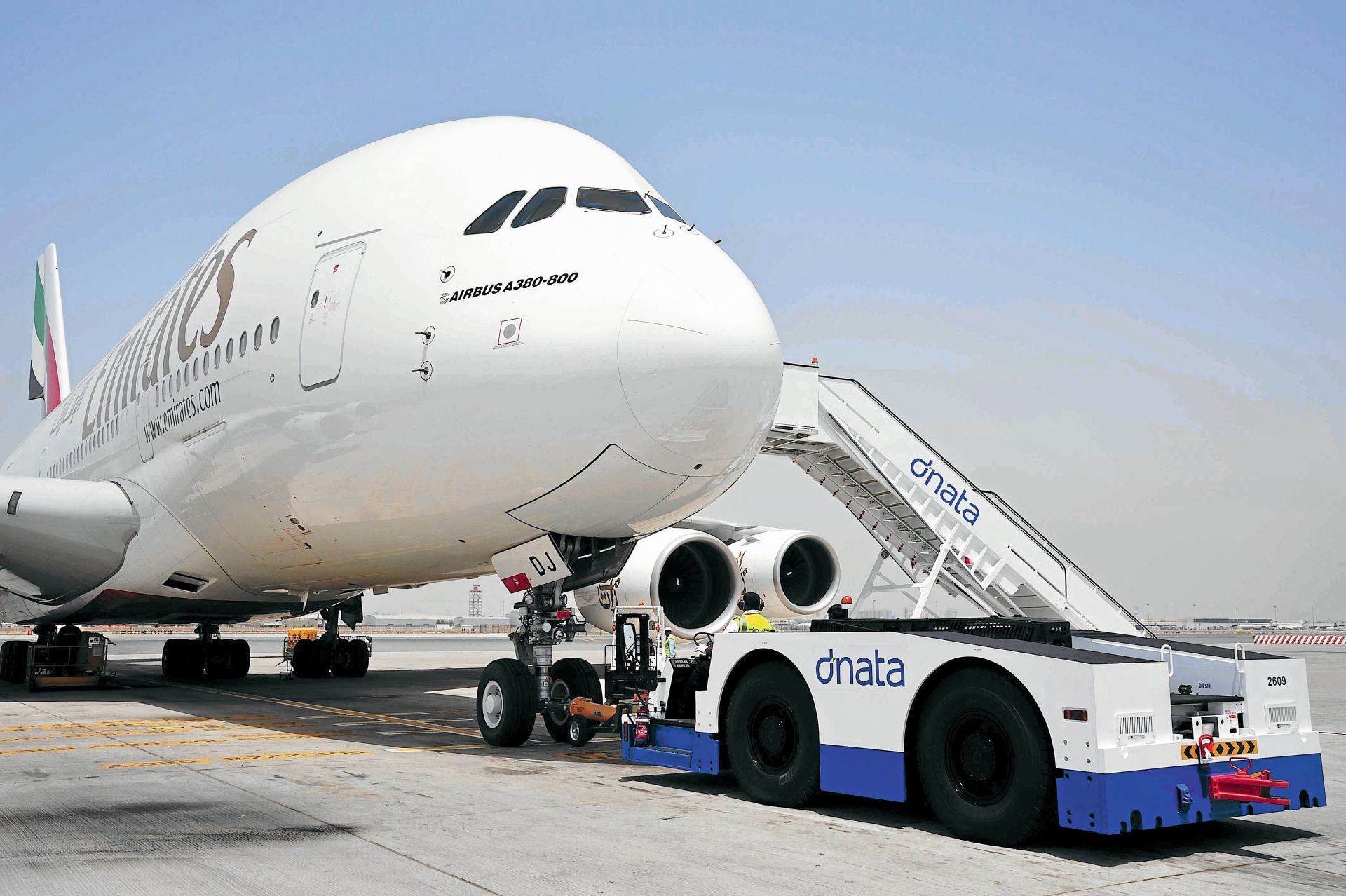Cargo takes off in the GCC
Neha Bhatia looks at the economy of cargo terminal construction across the GCC’s airports

Up to 20 million passengers are expected to pass through Dubai International Airport in the last quarter of 2014, spurred by religious holidays such as Eid Al Adha, the holy Hajj Pilgrimage and Christmas, as well as the typical rush caused by the New Year’s Eve break. Here’s a stat for some perspective: 20 million passengers is only a tad short of the total population of Australia.
Some voices in the UAE construction industry insist the bullish increase of airport construction and expansion projects is a natural extension, given the touristic capacities of Dubai. Others insist this airport infrastructure will in fact increase the number of tourists in the emirate.
But if prevailing market trends are anything to go by, 2015 will be about far more than just the retail and luxury capabilities of Dubai’s oldest and the GCC’s grandest airport. Between October and December 2014, local air service provider dnata expects 24 million baggage items to pass through Dubai International Airport – an average of 1.2 bags for each of the aforementioned 20 million passengers.
This excludes traffic at newly-launched Al Maktoum International Airport in Dubai World Central, which by 2020 is expected to greet 120 million passengers a year.
These baggage items are part of the total 2.5 million tonnes of cargo which Dubai International can take across its 35,000 sqm cargo facility. Dubai Airports Cargo is ranked second worldwide in terms of international freight traffic by the Airports Council International. Al Maktoum International Airport, for its part, has hosted dedicated freighters since May 2014, including all Emirates SkyCargo flights, which has led cargo volumes at Dubai International Airport to contract by 14.3% to 180,025 tonnes in June 2014, from the 210,134 tonnes recorded in the same month last year.
Understanding what these numbers mean for Dubai’s two airports demands a clear understanding of the life cycle of cargo items in general. Cargo is not only transported in the bellies of passenger airplanes, but also depends on freighters used by regional carriers. In the GCC, a well-established sea-airfreight system allows ships to bring in cargo to the Gulf states; shipments are then broken apart and put on aircraft for their final destination. This is why leading regional airlines are buying fleets of wide-body freighters and passenger airplanes which can carry large amounts of cargo.
However, creating separate airports for cargo is difficult because of the logistics of moving cargo from passenger planes to dedicated freighters. It’s clear then that there is a definite need for cargo terminals which can efficiently handle current levels of cargo movement, and even match future estimates.
Dnata looks ready to up its game. In October 2014, the home-grown cargo freight handling giant announced the construction of a new cargo terminal at Al Maktoum International Airport. Construction work is due to commence in the second quarter of 2015, and the terminal’s total annual capacity will eventually be 1.6 million tonnes. The initial proposed capacity alone is estimated at 500,000 tonnes a year.
These details were provided by Jon Conway, Senior Vice President of UAE Airport Operations, at a time when airlines are struggling to grow amid concerns of low cargo capacities. Three weeks after Conway’s announcement, Anand Lakshminarayanan, Divisional Vice-President for Route Planning at Emirates, said the firm’s expansion plan over the next seven years is “going to be a lot less [than recent years]”.
Speaking to local daily Gulf News at the Aviation Festival in Dubai, Lakshminarayanan also admits growth for the airline “will be partly constrained by capacity issues at Dubai International leading to 2020,” and that “peak hour slots at Dubai International Airport are becoming more challenging”.
Unquestionably aware of these challenges, dnata has increased its investment in aviation cargo. The firm will spend $5.4 million on ground support equipment and lounge development for Dubai International’s Concourse D, which is scheduled to open next year and take the airport’s annual capacity from 75 million passengers to 90 million.
The new dnata terminal is a timely addition to the existing logistics and cargo infrastructure in the emirate, given the intense scrutiny Dubai’s logistics capacities have been under since the Expo bidding rights victory, and subsequent Expo-related project plans, were revealed.
Conway says the modular designed terminal is expected to be completed by the end of 2016. Clearly, the new terminal will also be time-consciously constructed. This will in large measure depend on the contractors and project team, but more about that will only come to light after the project is tendered.
Dnata’s terminal, however, won’t be the first airport structure using fast-forwarded construction techniques. Contractors working on capital emirate Abu Dhabi’s Midfield Terminal Building also intelligently roped in the use of BIM and pre-assembled pieces to quicken the project’s pace towards completion. The first assembled steel arch of the Midfield Terminal Building was raised in February 2014, at the same time as installation of the baggage handling system began.
Georges Hannouche is a man familiar with baggage handling systems at Abu Dhabi’s airports. Chief executive officer at Bayanat Airports Engineering & Supplies, his firm was awarded the Abu Dhabi Terminal 3 Special Airports Systems Package in 2006.
Bayanat has also worked on airport projects in Dubai and Doha, giving him insight into cargo capacities across the GCC’s airports. Hannouche kicks off his conversation with Big Project ME by voicing his opinion about Dubai’s airports. Dubai International, he says, has evolved into a “smart” airport due to the construction of Terminal 3A and Terminal 4, and the extension of Terminal 2. The airport’s central and easily accessible location also makes it a “city” airport and enables the efficient transport of passengers and cargo.
Accessibility, Hannouche asserts, is not a feature the Al Maktoum International Airport 60km away in Dubai World Central can boast of.
“The authorities, realising Dubai World Central’s distance from the city and from the other airport, have provided adequate transportation facilities to and from Al Maktoum International Airport. Its location also suits cargo, being in close proximity to the Jebel Ali Free Zone. The question remains whether a railway link will be created to connect these two airports in the future, but with Dubai’s ambitious growth and vision, there is no doubt connectivity will be addressed.”
A connected railway link is something Abu Dhabi’s Midfield Terminal Building can comfortably show off.
“Ali Majed Al Mansoori, the chairman of Abu Dhabi Airports Company, has promised that Etihad Rail will eventually be connected to the Midfield Terminal Building – not at the opening of the airport, but shortly afterwards,” Hannouche says.
Muscat’s new international airport has also been designed and is currently being built with a similar approach to meet future increases, with its design permitting further expansion to the core of the new terminal building. The former Hamad International Airport in Doha, officially opened in April 2014, anticipated passenger growth would outnumber projected figures and will be able to accommodate a new terminal to address this issue. Its Terminal 2 looks confirmed, in anticipation of the 2022 World Cup.
Hussein Dabbas, Regional Vice President for International Air Transports Association’s (IATA) Africa and Middle East operations, speaking from his offices in Jordan, elaborates on what the agenda behind leaving airport expansions open means to governments in the region.
“All the work being done on airports – expansion, runways, acquiring new airplanes, opening new routes and increasing frequency – is happening simultaneously to support the airline industry in the region to grow and prosper,” Dabbas says.
Historically, Saudi Arabia has had the largest airport infrastructure capacity with airports in Jeddah, Riyadh and Dammam. The UAE then started taking charge, with the expansion of Dubai International Airport and the construction of Al Maktoum International Airport in Dubai World Central. Also notable is Qatar’s sizeable investment of $17.5 billion in the new Hammad International Airport. These investments are an indicator of the region’s aspirations to position itself as a global aviation hub.
“Unfortunately we don’t see that in other parts of the world, particularly in Europe where there hardly has been any new airport construction except one or two, which is really stifling the growth of many airlines in Europe and other parts of the world,” Dabbas says.
To Dabbas, the ongoing infrastructure investment and development clearly indicates that governments in the region are fully aware of the benefits of aviation, and that the industry is a strong pillar in the growth of the GCC’s economies.
“We are seeing this trend [of prioritising aviation development] very evidently in some of the Gulf countries like UAE, Qatar and so on, where huge attention is paid to the industry. It is paying off by increasing tourism, business travel, conventions and conferences in the region. All governments and airport authorities are working hard to improve their infrastructure. I don’t look at it as a race between the countries, but it’s definitely an investment for the future which will pay off quite well.”
Nonetheless, airport construction projects can be highly intimidating jobs. Bayanat’s Hannouche, having overseen many such projects, is all too familiar with the challenges of aviation capacity building.
“The greatest challenge is the coordination between the ongoing civil works, the main contractors and the subcontractors, along with the ground operations all operating at the same time,” Hannouche says. “At Bayanat, we usually work in fully functional airports, with flights and passengers on the move. This goes as part of our project management, understanding the various stakeholders and parties involved and affected, directly or indirectly, by and with our operations. At times, we are restricted to only a few hours of allowed operations so as to minimise disruptions to the airport.”
Nor is it easy to construct airports and related infrastructure where legalities go. An airport is not a typical construction project, and therefore its supply chain greatly differs from that of, say, a residential or commercial building. There are far more parties involved in the construction of an airport, from civil contractors to system integrators, consultants, suppliers, airlines, end users, project management companies and various other stakeholders. All parties have to work together to finally bring about the final project, based on the final approval of the relevant authorities, and under the direction of the International Civil Aviation Authority.
Health and safety standards are also a key aspect of aviation construction, which to some might appear daunting due to the sheer size and scope of operations involved, but Bayanat’s chief begs to differ.
“The size does not matter. At least in terms of safety, the pressure is the same [as on any construction project]. There is absolutely no room for any mistakes,” Hannouche says. “Our safety targets are the same, may we be master system integrators undertaking the entire terminal systems supply and installation or a subcontractor installing a couple of light fixtures on the runway. Safety for our people and airport remains our number one priority, regardless of the scope, scale and size of the project we are undertaking.”
All airport construction, however, boils down to keeping the aircraft where they belong – up in the air. Since cargo is a major part of airplane revenue, building capacity to support its effective transport is rightly a priority in the GCC, most prominently in Dubai.
To IATA’s Dabbas, building capacity to enable this revenue generation is the “major concern” for airport authorities in the region.
“Airports tend to work together as a hub, and during busy hours there can be a lot of constraints when it comes to finding gates, having passengers to disembark, providing buses to transport passengers to the terminal and so on,” Dabbas says. “What we’re witnessing right now is a continuous, double-digit and higher-than-average growth in passenger numbers.”
It’s key to remember that while increasing the number of passengers can increase cargo revenues, it also has an impact on the total required investment, entailing for example expanding terminal capacity. The equation can be confusing, but Dabbas puts it succinctly:
“Eventually, the industry’s growth requires continuous follow-up from airport authorities, who need to expand their services while also improving the utilisation of existing facilities.”

























